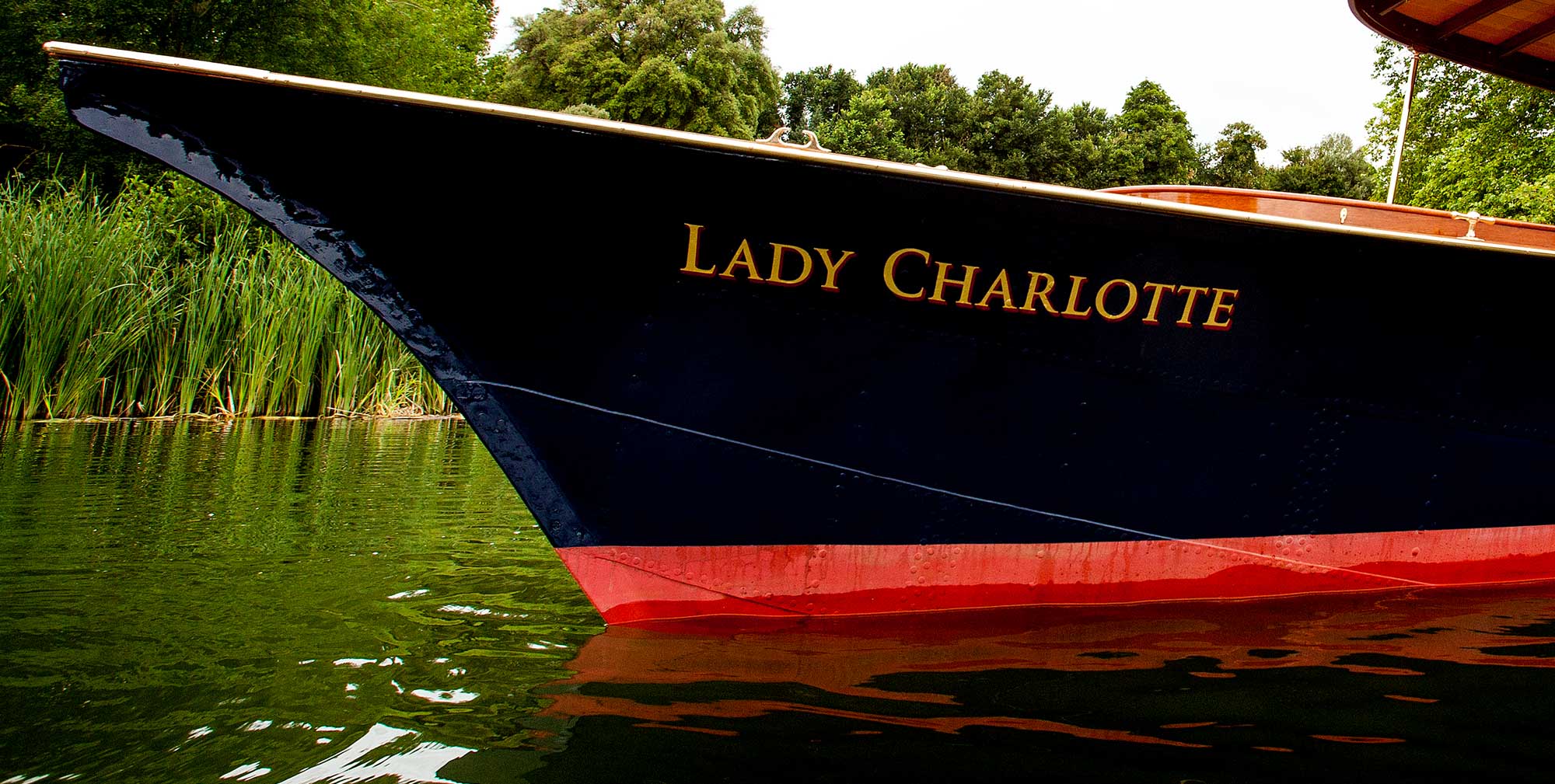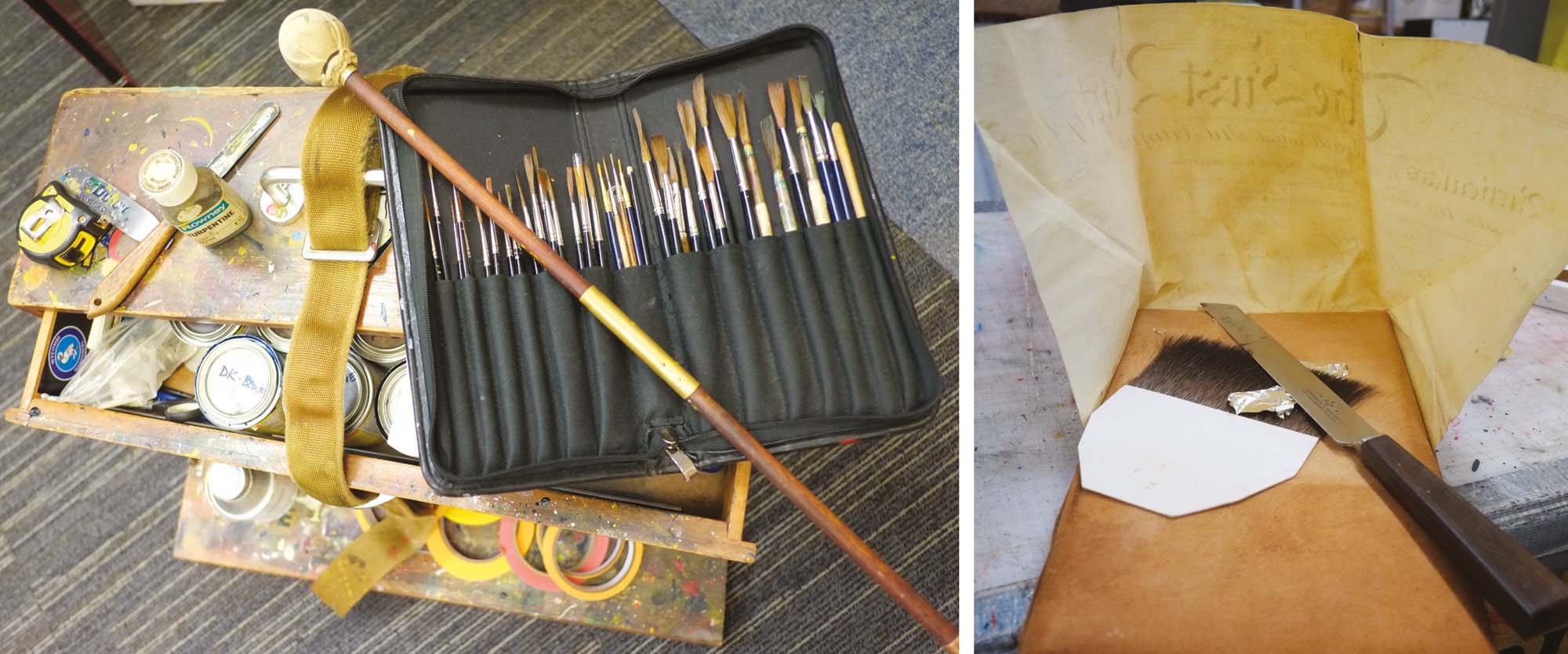


It is easy to say that you have started to build a boat; far harder to declare the boat is completely finished and there is nothing left to do except sail away into the sunset.
To get to this happy conclusion, it is very likely trades other than the boatbuilder will have contributed their particular skills. There are designers, marine engineers, riggers, sailmakers and many others who will be needed to get the project over the Finish line. Most people who work with wood seem to struggle with metal and I have yet to meet a boatbuilder who is any good at upholstery. The fact is, the boatbuilder, even a professional, cannot do everything.
Some of these very skilled people who contribute to the final outcome of a project, too often unacknowledged, can provide the details which make the difference between a plain boat and an outstanding one. The signwriting is one of those additions which can bring a style and emphasis contributing more than a sum of its parts.
Along with the waterline, the sheer line – the profile of the top of the topsides – is perhaps the most important line on a boat. Get either, or in some cases both, wrong and the eye of the beholder is thrown. A fair and elegant sheer needs to be celebrated. The addition of a cove line, often cut into the sheer strake, draws the eye to the key feature the designer has agonised over and the boatbuilder's eye has diligently created.
The signwriter fills the cove with a gold leaf, underscoring it with a painted shadow line and possibly a flourish at each end. The gold glows and darkens when protected with a tung-oil-rich varnish. Somehow this looks better as it ages, the shadow giving a 3D effect to the decoration.
The forward end of the cove line peters out to provide space for the boat's name which the long bristle brush in the signwriter's steady hand writes with a flowing style, again in gold with a paint shadow. Subtle variations include dropping the cove line amidships to exaggerate a fairly flat sheer, fading out the line at the stern to take the eye away from a flat upright transom or adding a fancy curl which pulls the eye towards a lovely counter. The famously beautiful yachts designed by William Fife added a mythical dragon's head to the forward end of the sheer strake with a stylised tail at the stern.

Above: Tim's Mahl stick and pencils Below: The signwriter's cush, tip and knife.
Photographs by the author.
Lady Charlotte photographs by Kathy Mansfield
Since about 2007, the boats I have built, restored or maintained have all been enhanced by the work of Tim Bird, a signwriter, friend and master craftsman. Tim exudes that understated modesty of someone with natural ability, a humble approach to producing beautiful work with calm competence. When the build or restoration is nearing the final stages, the hull has its final coat of paint and the last coat of varnish is about to be applied, it is time for the name to be sign written and the cove line gilded. Typically, Tim and I will briefly discuss the colour of the shadow and I leave him to choose the style and layout, confident he will get it just right.
The craft of signwriting does not disappoint when it comes to peculiar terms and tools. First up is the Mahl stick, this is a length of dowel about 2' (0.6m) long with a soft, round, cloth or leather covered ball on one end. The stick is used to steady the hand which holds the paint brush by placing it across the work with the spare hand.
With brushes you enter a parallel world where a brush is not a brush, it’s a 'pencil'. The pencil can have a chisel or a pointer end. The ferrule holding the bristles can be metal but the old school insist on using a quill. The size of the quill determines the size of the pencil and this is measured not in fractions of an inch or millimetres but by the species of bird the quill came from. So, the very smallest is a lark, followed by a crow, three sizes of goose and the largest is the large swan. The bristles are usually sable, which is a weasel to you and me but the really top-quality bristles are from a Kolinsky; still a weasel but cuter.
Gold has three unique qualities, firstly, it does not tarnish; secondly, it has a matchless lustre; lastly, it looks beautiful. Nothing synthetic comes close to gold leaf for its appearance and longevity. Gold leaf is made by pulling the metal through rollers then by repeatedly beating out the gold between special paper until it is wafer thin, 0.5 micron. Tim uses 23½ carat gold which comes in two forms, loose and transfer, both contained in a small square 'book'. The loose gold is used to gild large items like figureheads.
The transfer gold is lightly glued onto tissue paper and is for lettering and lines. The gold leaf is attached using an adhesive called 'size', a clear liquid that Tim faintly colours with yellow paint so he can see it on the surface as he writes. The size dries to a critical point where it's just tacky enough for the gold leaf to stick without sliding.
The size comes in various drying times from 1 to 24 hours, and it is possible to have 48-hour size. The area to be gilded determines the drying time required, the longer the time the greater latitude there is for applying the leaf. Therefore, if you are gilding a large item such as a figurehead it might take a couple of hours just to apply the size and maybe all day to get the gold leaf on so you may need the 24-hour drying size to give that window of 8 hours before the size is dry. A small, short boat name will need the 1-hour size as it only takes 10 minutes to apply the gold leaf.
Once the gold is on it looks messy until it is very delicately brushed using a wide fine brush – sorry not a brush; it’s called a 'tip'. The tip’s bristles are made from more furry animals such as squirrel, badger or even a pony and they remove the leaf that has not bonded. This waste is called 'skewings' and Tim collects it to use when he is gilding lettering carved into wood.
Loose leaf gilding is fascinating because it is so delicate. Tim uses his signwriter’s 'cush', a rectangular board about 8” x 5" (200 x 125mm) upholstered with soft leather with an upstand of parchment along three sides to shelter the leaf from a gust of wind The loose gold leaf is placed on the cush and with a short sharp puff, Tim blows the leaf out flat, cuts it with a special knife, flicks it onto the tip and brushes it on the tacky size.
Gold leaf is supplied in a vast range of colours, sheens, purity and thickness. The transfer leaf can be specified with light, medium or firm 'presses' – the strength of the bond to the tissue paper. The higher the carat, the purer the gold and the more durable it becomes. For a boat signwriting on to varnished wood, I always overcoat the signwriting and gilding with two coats of varnish for protection. Gilding onto a painted surface is more vulnerable to being worn away and the old showman’s wagons and fairground rides were usually varnished over the gilded signwriting and decoration adding a slight amber tinge to the paintwork.
Signwriting paint contains especially dense pigments and extra driers so only one coat needs to be applied and it tacks off before it has a chance to run. Tim uses a brand called One-Shot Enamel which he decants into a small cup held in a homemade wire frame that loops around his index finger so he can hold the mahl stick and paint cup with one hand. He sometimes adds a tiny drop of pure turpentine to the paint to help it flow and lose the fine brush marks.
When Tim arrives to spend the day in my workshop to give his special finishing touch to many months of boatbuilding work, a calmness prevails. With some BBC R4 chat on the radio, I get on with something quiet and dust free. Tim settles into his work with a logical progression, balancing the time between the size drying and writing the letters. There is economy of movement, every action bringing the job along efficiently but never hurried. His eye for a fair line and smooth curve is instinctive, the loaded brush swoops and lifts off the surface to leave a fine end point to the stroke, the muscle memory from repeated practice and dedication pays off. It is always a good day when Tim arrives.
